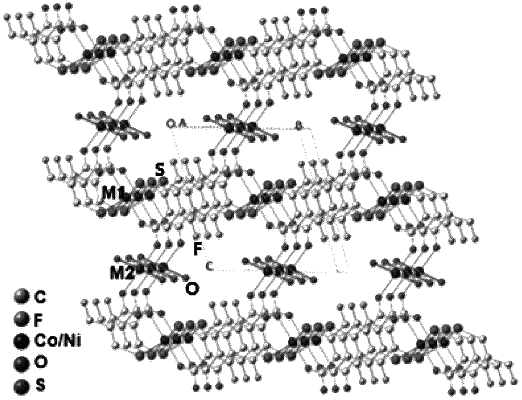| CPC C07C 51/418 (2013.01) | 9 Claims |

|
1. A bimetallic coordination metal-organic framework material, comprising:
an M1 two-dimensional coordination network structure comprising M1 coordination layers; and
M2 coordination structures embedded between the M1 coordination layers;
wherein coordination metal ions M1 are coordinated with ligands to form the M1 two-dimensional coordination network structure; each of the M2 coordination structures is a zero-dimensional M2 coordination structure, a one-dimensional M2 coordination structure, or a two-dimensional M2 coordination structure; coordination metal ions M2 are coordinated with the ligands to form the M2 coordination structures;
wherein each of the ligands is a compound containing a carboxyl group and soft groups; the coordination metal ions M1 form a M1 two-dimensional coordination network structure with the soft groups or form the M1 two-dimensional coordination network structure with the soft groups and carboxyl groups of the ligands; the coordination metal ions M2 and oxygen atoms of the carboxyl groups of the ligands form the M2 coordination structures embedded between the M1 coordination layers;
wherein the soft groups are —XH, and X is selected from S and Se.
|